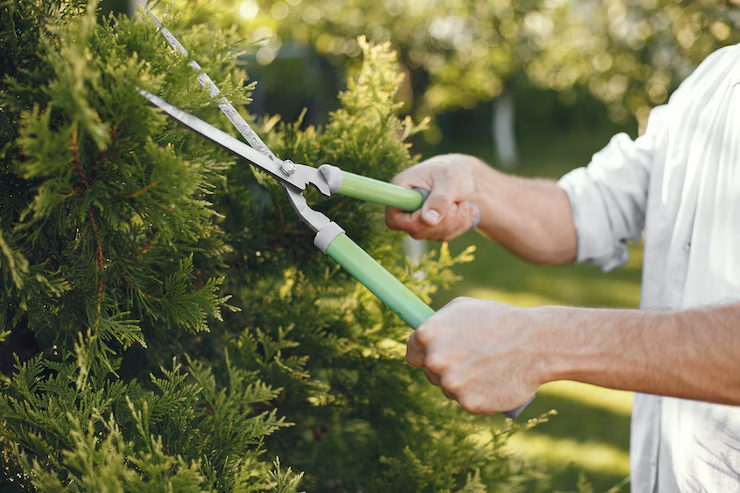Trees make Sydney’s suburbs stunning, don’t they? Towering gums, shady jacarandas, and lush palms add life to our homes and streets. But without proper care, these leafy giants can become a hazard or just plain ugly. That’s where tree services step in.
Tree trimming isn’t just about keeping things tidy. It’s about safety, property value, and your trees’ health. Whether you’re a homeowner, property manager, or nature lover, this guide will walk you through why regular tree trimming is so important—and how to do it right.
The Importance of Tree Trimming for Safety
Let’s start with the big one—safety. If left untrimmed, trees can cause serious damage or injury.
Preventing Property Damage
One strong gust of wind and—bang!—a heavy limb comes crashing down onto your roof or car. It happens more often than you’d think. Trimming helps manage weight distribution and removes unstable limbs before they become a real issue.
Avoiding Injury
Low-hanging branches over driveways, walkways, or footpaths are more than just annoying—they’re dangerous. You don’t want someone bumping their head or tripping because a branch is in the way.
Fire Safety
Overgrown trees can become fire ladders in bushfire-prone areas like many parts of Sydney. Trimming canopies reduces fuel and helps protect property during fire season.
How Tree Trimming Enhances Aesthetics
Of course, safety isn’t the only reason to keep trees in check. Trimmed trees just look better.
Shaping Trees for Visual Appeal
Have you ever seen a tree shaped like a lollipop? That’s no accident. Regular trimming lets you guide the shape and form of your trees. You can control height, width, and symmetry, giving your garden a polished, intentional feel.
Improving Curb Appeal
First impressions count. A tidy front yard with well-maintained trees can boost your home’s street appeal and value.
Healthier Looking Trees
Cutting away dead or diseased limbs gives trees a cleaner, healthier appearance. It’s like giving them a fresh haircut.
Signs Your Trees Need Trimming
I’m not sure if it’s time to grab the secateurs. Here are some common signs.
Overgrown Branches
If a tree’s starting to block your windows, hang over your roof, or stretch into your neighbour’s yard, it’s time.
Signs of Disease or Decay
Look for dead wood, cracked limbs, or fungus growing near the base. These can signal bigger problems.
Branches Near Powerlines
This one’s serious. Trees near powerlines are dangerous and often require urgent professional trimming. Don’t risk doing it yourself—call your local Sydney tree services provider.
The Best Time of Year for Tree Trimming
Timing is everything, especially when it comes to pruning.
Seasonal Considerations
Winter is often the best time to trim most trees. They’re dormant, which reduces stress and helps with clean regrowth in spring.
Species-Specific Timing
Some trees, like flowering varieties, are better pruned after they bloom. Evergreen species may benefit from light trimming year-round.
DIY Tree Trimming vs. Professional Services
Thinking of trimming your trees? Let’s break down when that’s okay—and when it’s not.
When It’s Safe to Do It Yourself
If you’re dealing with small trees, shrubs, or low branches, go for it. Use clean, sharp tools and follow basic pruning guidelines.
When to Call in the Pros
Big trees, high branches, or anything near powerlines? That’s a job for the experts. Professional arborists have the gear and training to do the job safely and efficiently.
What to Expect from Sydney Tree Services
A typical service includes inspection, trimming, and debris removal. Many providers also offer health assessments and long-term maintenance plans.
Tools and Techniques for Effective Tree Trimming
Ready to give it a go? Make sure you’ve got the right kit.
Essential Tools
Loppers are for thick branches, pruning saws are for chunky bits, and secateurs are for finer work. Always disinfect your tools to avoid spreading disease.
Techniques for Clean Cuts
Cut at a slight angle just outside the branch collar. Don’t leave stubs or cut too close to the trunk, either—this can invite rot.
Safety Gear
Gloves, eye protection, and sturdy boots are essential. Helmets and harnesses are also essential if you’re climbing or using chainsaws.
Common Mistakes to Avoid When Trimming Trees
Even with the best intentions, it’s easy to get it wrong.
Over-pruning
Taking off too much weakens the tree and affects its ability to photosynthesise. Rule of thumb? Don’t remove more than 25% of the canopy at once.
Bad Cut Placement
Cutting too close to the trunk or leaving stubs can lead to disease and poor regrowth.
Ignoring Safety
Using a chainsaw without training? Climbing a ladder in thongs? Big nope. Don’t risk it; get help if you’re unsure.
Environmental Benefits of Regular Tree Trimming
It turns out that trimming isn’t just good for safety and looks; it helps the environment, too.
Promoting Tree Health and Longevity
Trimming encourages strong structure and improves air circulation and light penetration.
Supporting Biodiversity
Healthy trees provide better homes for birds, bees, and beneficial bugs.
Preventing Invasive Species
Catching fungal infections or pests early and removing affected branches can stop them from spreading to other trees.
Conclusion
Tree trimming is one of those jobs that’s easy to ignore until it’s too late. Regular trimming is essential to keep your yard safe, boost kerb appeal, or give your trees a longer, healthier life.
If you’re unsure where to start or have a job that looks too big (or high!) for DIY, professional Sydney tree services can help. They’ve got the tools, the skills, and the local know-how to get it done right. Keep your trees happy, property safe, and street looking sharp.




